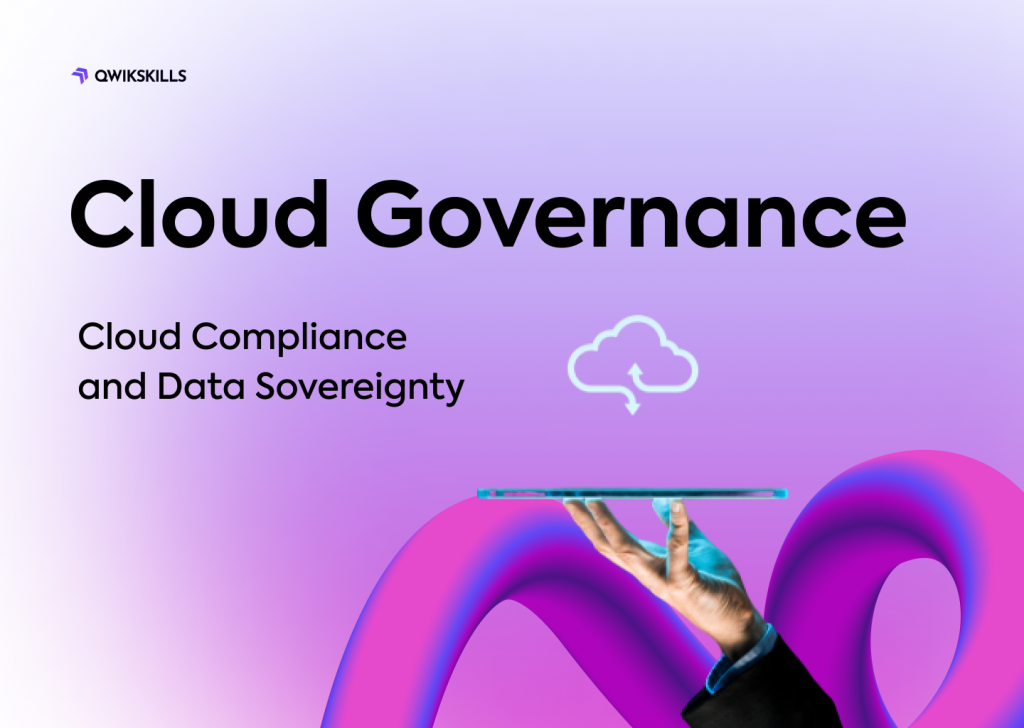In today’s digital landscape, organizations increasingly adopt cloud computing to store, manage, and process their data. However, the rise of multicloud adoption has added a new level of complexity to this trend. Multicloud explained is the use of two or more cloud computing services from different providers, which enables organizations to take advantage of the unique strengths of each provider. This approach can offer several benefits of multicloud, such as increased resilience, reduced costs, and improved performance. Despite these benefits, multicloud adoption also presents several challenges, including managing multiple providers and ensuring interoperability between them. Read on to know more about what is multicloud: understanding the multicloud strategy, benefits of multicloud, multicloud adoption strategy and challenges and how to overcome them!
What is Multicloud?
What is multicloud: understanding multicloud is the use of multiple cloud computing services from different providers. This gives leverage to organizations to take advantage of the unique strengths of each provider. The concept of multicloud is a natural evolution of cloud computing, which initially began as a simple deployment of a single public cloud provider. Over time, as organizations have become more comfortable with cloud computing, they have realized that a single cloud solution only meets some of their needs. Different types of clouds can be used in a multicloud strategy, such as public, private, and hybrid clouds.
Public Clouds: Public clouds are owned and operated by third-party providers and offer services to the general public. These clouds can be accessed over the internet, and organizations can use them to store and process their data. The most popular public cloud providers are Amazon Web Services, also known as AWS, Google Cloud Platform, and Microsoft Azure.
Private Clouds: On the other hand, private clouds are owned and operated by an organization and designed to meet its specific needs. These clouds can be located on-premises or hosted in a third-party data center. Private clouds offer greater control and security, as the organization has complete ownership and control of the cloud infrastructure.
Hybrid Clouds: Hybrid clouds combine the features of public and private clouds, allowing organizations to take advantage of both benefits. With a hybrid cloud, organizations can use a public cloud for non-sensitive data and applications while using a private cloud for sensitive data and applications. This can help organizations to reduce costs while maintaining security and control over their most critical data.
In a multicloud environment, organizations must manage multiple providers and ensure that their applications and data are designed to be cloud-agnostic. This demands careful planning and coordination maintain data consistency and interoperability across different cloud environments.
In a nutshell, multicloud is the use of multiple cloud computing services from different providers, and various types of clouds can be used in a multicloud strategy. Each type of cloud has its benefits and drawbacks, and organizations must choose the cloud types that meet their specific needs. Careful planning and management are essential for successful multicloud adoption.
Benefits of Multicloud Explained
Adopting a multicloud strategy has several benefits for organizations looking to leverage the advantages of cloud computing. Here are the key benefits of multicloud adoption:
Improved Performance: Multicloud allows organizations to use the cloud services best suited for their specific applications and workloads. This can improve performance, as the applications and workloads can be distributed across multiple clouds. With a multicloud approach, organizations can leverage each cloud provider’s strengths, resulting in improved performance and reduced downtime.
Increased Security: One of the significant concerns with cloud computing is security. Multicloud adoption can help organizations improve security by distributing workloads across multiple cloud providers. This reduces the risk of a single point of failure and can help organizations to protect their data and applications from cyber threats.
Cost Savings: Another benefits of multicloud is that it can help organizations to reduce costs. Organizations can choose the most cost-effective option for each workload or application using multiple cloud providers. This results in significant cost savings, as organizations can avoid being locked into a single provider with fixed pricing.
Greater Flexibility: Multicloud also provides organizations with greater flexibility in terms of cloud adoption. With a multicloud approach, organizations can use the cloud providers best suited to their specific needs. This can help organizations to avoid vendor lock-in and maintain control over their cloud infrastructure.
Innovation: Multicloud also allows organizations to take advantage of new cloud services and features as they become available. This can help organizations to stay competitive and adopt new technologies quickly.
Best Multicould Strategies to Adopt
Developing a successful multicloud strategy is essential for organizations that want to maximize the benefits of cloud computing. Here are some best practices for developing and implementing a successful multicloud strategy.
Choose the Right Cloud Providers: The first step in developing a multicloud strategy is choosing the right ones. Organizations should evaluate different cloud providers based on their specific needs and requirements. They should consider performance, security, reliability, and cost factors. It is also necessary to consider the level of integration and compatibility between different cloud providers.
Establish Clear Governance and Management Processes: It is essential to establish transparent governance and management processes for a multicloud strategy. This includes developing policies and procedures for the management of data, applications, and infrastructure across different cloud providers. This can help ensure that the organization maintains control over its cloud infrastructure and can monitor and manage its cloud resources effectively.
Ensure Cloud-Agnostic Applications and Data: To ensure that applications and data are compatible with different cloud providers, it is important to design them to be cloud-agnostic. This means designing applications and data to be portable and independent of the underlying cloud infrastructure. By designing applications and data in this way, organizations can avoid being locked into a specific cloud provider and can migrate between different cloud providers more easily.
Implement Automation and Orchestration: Automation and orchestration can help simplify managing a multicloud environment. Organizations can use automation and orchestration tools to provision and manage cloud resources across different cloud providers. This can reduce the risk of errors and improve the efficiency of cloud management.
Maintain Security and Compliance: Security and compliance are critical considerations for a multicloud strategy. Organizations must ensure that their cloud providers meet their security and compliance requirements. They should also establish processes to monitor and manage security and compliance across different cloud providers.
Regularly Review and Optimize the Multicloud Strategy: A multicloud strategy is not a one-time effort. Organizations should periodically review and optimize their multicloud strategy to ensure that it continues to meet their needs and requirements. This includes reviewing different cloud providers’ performance, cost, and security and adjusting the multicloud strategy as needed.
By following these practices, organizations can maximize the benefits of a multicloud strategy and achieve their cloud computing objectives.
Challenges of Using Multicloud
While multicloud can provide a range of benefits to organizations, several challenges must be addressed. One of the primary challenges is the complexity of managing multiple cloud providers, each with its management tools, interfaces, and APIs. This can make it challenging to maintain a unified view of resources across the various clouds and lead to service-level agreements (SLAs) and performance issues.
Another challenge is ensuring data consistency and interoperability between different cloud providers. As data is moved between clouds, it can be subject to different encryption standards, data formats, and other technical requirements. This can create significant interoperability challenges and make maintaining data consistency and integrity difficult.
When we talk about challenges that organizations face even after multicloud adoption is the risk of vendor lock-in, where an organization becomes overly reliant on a single cloud provider and cannot move its workloads or data to other clouds in the future. This can lead to significant operational and financial risks, as organizations may be locked into expensive or inflexible contracts with their providers.
Organizations need to take a proactive approach to multicloud management to address these challenges. This may involve establishing transparent governance and management processes that enable the organization to maintain a unified view of resources across multiple clouds while ensuring that data is consistent and interoperable.
Organizations should also ensure that their workloads and data are designed to be cloud-agnostic to avoid vendor lock-in. This can involve implementing a container-based architecture or using standard data formats and APIs that can be easily moved between clouds.
In addition, organizations should also invest in tools and platforms that can help them manage their multicloud environment more effectively. This can include means for managing resources across multiple clouds, monitoring performance and SLAs, and automating key management tasks to reduce the risk of errors and downtime. By taking a strategic approach to multicloud management, organizations can overcome the challenges of multicloud and realize the full benefits of this powerful strategy.
Final Note
In conclusion, a multicloud strategy has become essential for organizations to meet the demands of the ever-changing digital landscape. The benefits of multicloud, makes it a powerful approach for enterprises to optimize their operations. However, adopting best practices and overcoming the challenges of implementing a multicloud strategy is crucial. Organizations can ensure a successful and effective multicloud deployment with the benefits offered. With the rapid adoption of cloud services, the ability to manage and orchestrate applications across multiple clouds has become critical. Therefore, businesses must have a well-planned multicloud strategy to achieve operational efficiency, agility, and growth. Qwikskills is a one-stop solution for preparing for cloud platforms certification exams & gaining hands-on experience on them. Check it out today!



